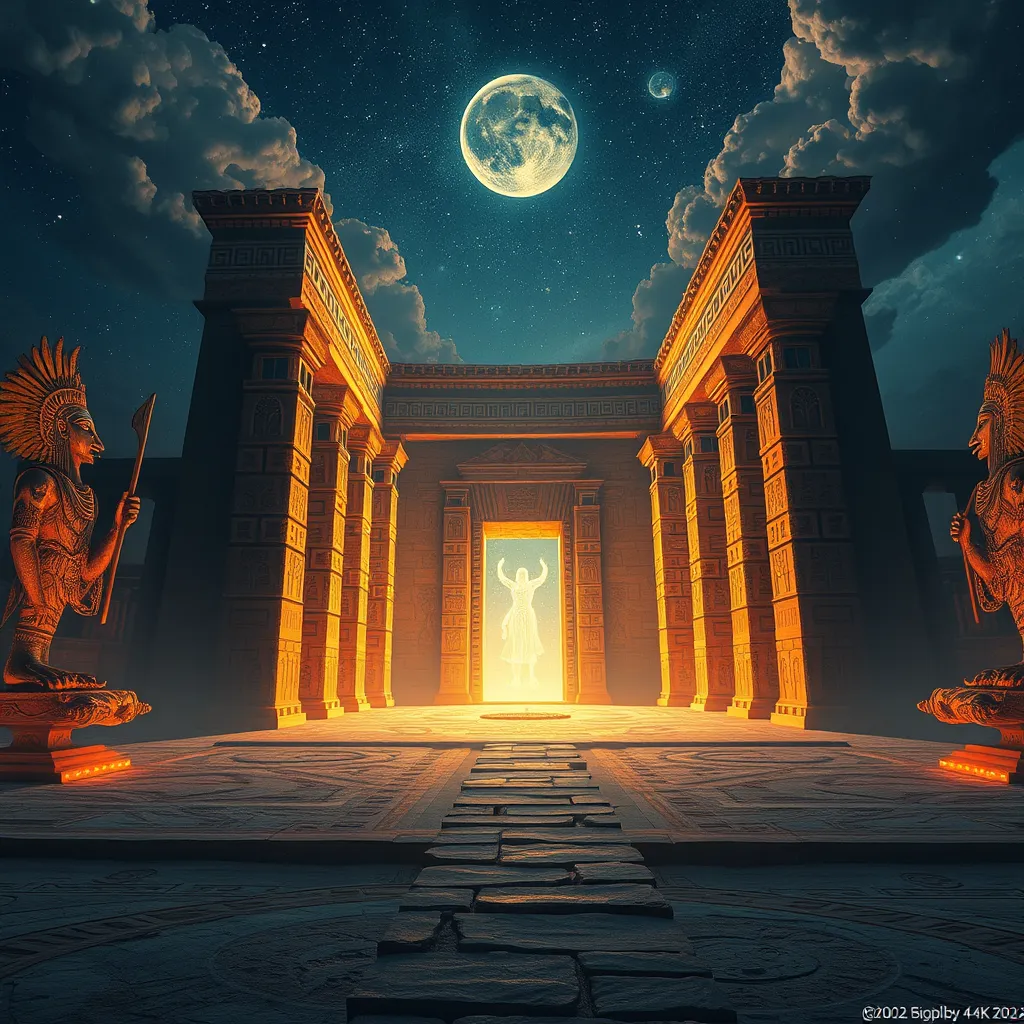The Duat: A Realm of Hidden Wonders
I. Introduction to the Duat
The Duat, often referred to as the Egyptian underworld, holds a significant place in ancient Egyptian mythology and cosmology. It is a mysterious realm that embodies the beliefs and values of ancient Egyptians concerning life after death. In their view, the Duat was not merely a place of shadow and darkness but a transformative space where the soul embarked on a journey toward eternity.
In Egyptian culture, the afterlife was a pivotal concept, reflecting the belief that one’s actions during life would determine their fate in the hereafter. The Duat served as a transitional space where the deceased would face trials, meet deities, and ultimately seek rebirth. This notion was deeply intertwined with the Egyptians’ understanding of existence, morality, and the cyclical nature of life and death.
II. The Structure of the Duat
The Duat is often depicted as a complex and multi-layered landscape, comprising various regions that represent different aspects of the afterlife experience. According to ancient texts, the Duat includes:
- The Waters of Chaos: A primordial ocean that the deceased must cross.
- Fields of Iaru: A paradise-like realm where souls could enjoy eternal bliss.
- The Hall of Judgment: The key location where the heart of the deceased is weighed against the feather of Ma’at, representing truth and justice.
- The Land of the Dead: A dark and perilous area populated by various creatures and spirits.
Each region serves a unique purpose in the soul’s journey, illustrating the complexity of their beliefs about the afterlife. Key features within the Duat include:
- The Lake of Fire: A place of punishment for the wicked.
- The Abyss: A dark void representing eternal oblivion.
- Islands of the Blessed: Areas reserved for the virtuous, where they could live in peace.
III. Deities and Entities of the Duat
The Duat is populated by a myriad of gods and goddesses who guide and judge the souls of the deceased. Major deities associated with the Duat include:
- Osiris: The god of the afterlife, resurrection, and the judge of the dead.
- Anubis: The god of mummification and protector of graves, who oversees the embalming and the journey of the soul.
- Thoth: The god of wisdom and writing, who records the results of the judgment.
- Ma’at: The goddess of truth and justice, whose feather is used in the weighing of the heart.
In addition to these deities, various spirits and mythological creatures populate the Duat, each with specific roles, such as:
- Demons: Entities that challenge the souls of the deceased.
- Protective Spirits: Guides that assist the deceased on their journey.
IV. The Journey Through the Duat
The journey through the Duat is a vital component of the afterlife experience. Upon death, the soul embarks on a perilous journey that is marked by several stages:
- Crossing the Waters: The soul must navigate the chaotic waters, often assisted by deities.
- Facing Trials: The deceased encounters various challenges and creatures that attempt to thwart their progress.
- The Weighing of the Heart: In the Hall of Judgment, the heart is weighed against Ma’at’s feather to determine the soul’s fate.
- Final Judgment: Based on the outcome, the soul either ascends to paradise or is condemned.
V. The Duat in Ancient Egyptian Texts
Understanding the Duat requires examining ancient Egyptian texts that describe this enigmatic realm. Two of the most significant collections are:
- Pyramid Texts: The oldest religious texts in the world, inscribed in the pyramids of the Old Kingdom, which detail the journey of the deceased through the Duat.
- Coffin Texts: A collection of spells and inscriptions that provided guidance to the deceased in the afterlife, elaborating on the trials present in the Duat.
Additionally, the Book of the Dead serves as a comprehensive guide for the soul, illustrating the Duat and the necessary rituals to navigate its challenges. This text is rich with imagery and spells aimed at protecting the deceased and ensuring a successful passage through the afterlife.
VI. Symbolism and Themes in the Duat
The Duat is laden with symbolism that reflects the ancient Egyptians’ beliefs about life, death, and rebirth. Two prominent themes include:
- Rebirth and Transformation: The journey through the Duat symbolizes the potential for renewal and transformation, akin to the cycle of the Nile flooding and receding.
- Light and Darkness: The contrast between light and darkness represents the struggle between good and evil, order and chaos, with the ultimate goal of achieving harmony.
VII. Archaeological Discoveries Related to the Duat
Recent archaeological discoveries have shed light on the ancient Egyptians’ beliefs about the Duat. Notable artifacts include:
- Mummified remains: Offering insights into burial practices and the importance of preserving the body for the afterlife.
- Funerary texts: Such as the Pyramid Texts and the Book of the Dead, which provide crucial information about the Duat and the afterlife.
Excavations of tombs, especially those of prominent figures, have revealed intricate paintings and inscriptions that depict various aspects of the Duat, illustrating the beliefs and customs surrounding death and the afterlife.
VIII. The Influence of the Duat on Modern Culture
The Duat continues to captivate the imagination and influence modern culture, appearing in literature, art, and popular media. Its themes of death, resurrection, and the afterlife resonate with contemporary audiences, often symbolizing the eternal struggle between light and darkness. Some notable examples include:
- Literature: Works that incorporate Egyptian mythology, such as Rick Riordan’s “The Kane Chronicles.”
- Art: Modern interpretations of ancient Egyptian art often draw on the symbolism of the Duat.
- Film and Television: Various films and series explore themes of the afterlife, drawing inspiration from the rich mythology of the Duat.
The enduring fascination with ancient Egyptian beliefs and practices continues to inspire scholars, artists, and enthusiasts alike, ensuring that the mysteries of the Duat remain a subject of exploration and intrigue.




